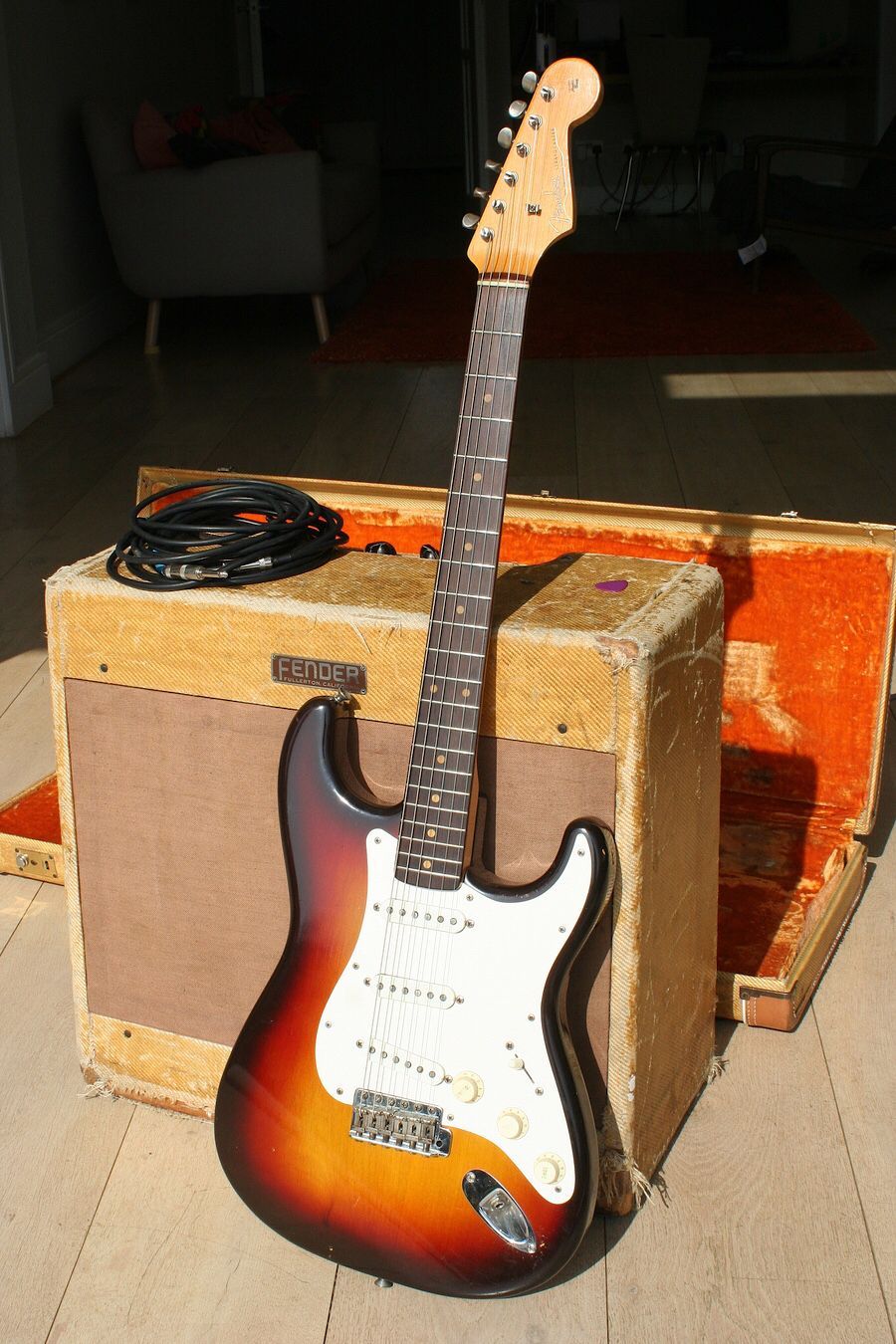Stratocaster
|
The greatest piece of industrial design in the last two hundred years. Leo Fender’s Stratocaster is so good that no one has managed to improve it, at all, since Fender invented it in 1954.
Ok: maybe the introduction of a rosewood fretboard in 1959. But that’s it. And it kills fascists, too.
As a design classic
So what is under the hood? The Stratocaster’s components are modularised and standardised for simple production-line manufacture and this has the happy advantage of easy maintenance later. Almost all of the replacements can be easily replaced or upgraded. Those that can’t easily be replaced — frets, for example — don’t need to be: It is cheaper just to replace a neck outright (though as the Strat has moved from mass-market product to high-end antique, that calculus has shifted somewhat. You can refret a stratocaster: it just normally costs more than buying a whole replacement neck.
In any case, there is manufacture — one set of design imperatives — and then maintenance and adjustment — a different set. On the Stratocaster, they are simpatico.[1]The stuff the player needs to be able to adjust “on the fly” — the tuning machines, pick-up selector, volume and tone controls and, of course, the tremolo bar — are intuitive, well-placed, and don’t get in the way — they are well “signified”, in design argot — and the utility of the instrument — its “affordances” — are uniformly excellent, and in many cases radical. For example, the offset cut-aways allowing access to the upper frets; the six-in-a-row tuning machines on the upper side of the headstock,[2] and the contoured body making the experience way more comfortable for your forearm resting on the guitar body, and at the same time taking out quite a lot of weight from the solid wooden body. The Stratocaster is appreciably — and a gigging musician will tell you, that is literally appreciated — lighter than its un-contoured forebear, the Telecaster.
More specialised adjustments (action, intonation, and and neck bow — things a player would not normally need to adjust once the guitar is correctly set up) can be be made quickly with the aid of simple tools and without disassembling the guitar. These these adjustments you might expect a specialist guitar technician to to do. More fundamental adjustments, by way of repair or or or replacement of parts are also possible, by disassembling the guitar and with elementary electrical work (soldering). Only parts which are are vital to the engineering of the instrument —the frets, which must be spaced exactly in relation to each other and never been to be adjusted — cannot be replaced except by a luthier.
See also
References
- ↑ Legal eagles: to bring this back to you, consider the design imperatives in negotiating a contract, versus those of using that contract once completed. See: purpose
- ↑ Bigsby pioneered both the cutaway and the six-in-a-line tuners in 1948 on a guitar for Billy Bird, but it looks stupid. the Stratocaster is just perfect.

